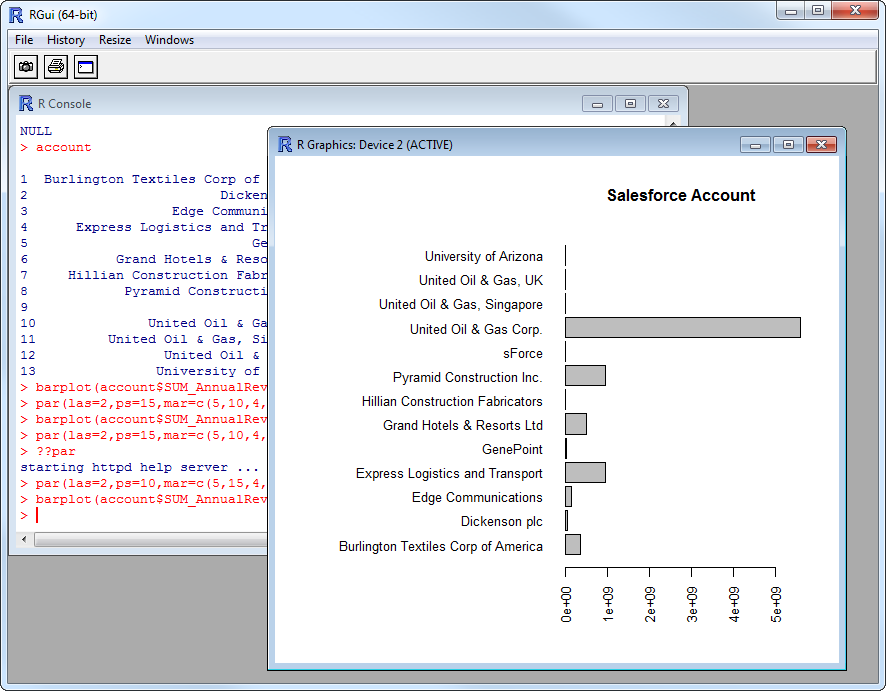Discover how a bimodal integration strategy can address the major data management challenges facing your organization today.
Get the Report →Analyze Elasticsearch Data in R
Use standard R functions and the development environment of your choice to analyze Elasticsearch data with the CData JDBC Driver for Elasticsearch.
Access Elasticsearch data with pure R script and standard SQL on any machine where R and Java can be installed. You can use the CData JDBC Driver for Elasticsearch and the RJDBC package to work with remote Elasticsearch data in R. By using the CData Driver, you are leveraging a driver written for industry-proven standards to access your data in the popular, open-source R language. This article shows how to use the driver to execute SQL queries to Elasticsearch and visualize Elasticsearch data by calling standard R functions.
About Elasticsearch Data Integration
Accessing and integrating live data from Elasticsearch has never been easier with CData. Customers rely on CData connectivity to:
- Access both the SQL endpoints and REST endpoints, optimizing connectivity and offering more options when it comes to reading and writing Elasticsearch data.
- Connect to virtually every Elasticsearch instance starting with v2.2 and Open Source Elasticsearch subscriptions.
- Always receive a relevance score for the query results without explicitly requiring the SCORE() function, simplifying access from 3rd party tools and easily seeing how the query results rank in text relevance.
- Search through multiple indices, relying on Elasticsearch to manage and process the query and results instead of the client machine.
Users frequently integrate Elasticsearch data with analytics tools such as Crystal Reports, Power BI, and Excel, and leverage our tools to enable a single, federated access layer to all of their data sources, including Elasticsearch.
For more information on CData's Elasticsearch solutions, check out our Knowledge Base article: CData Elasticsearch Driver Features & Differentiators.
Getting Started
Install R
You can match the driver's performance gains from multi-threading and managed code by running the multithreaded Microsoft R Open or by running open R linked with the BLAS/LAPACK libraries. This article uses Microsoft R Open 3.2.3, which is preconfigured to install packages from the Jan. 1, 2016 snapshot of the CRAN repository. This snapshot ensures reproducibility.
Load the RJDBC Package
To use the driver, download the RJDBC package. After installing the RJDBC package, the following line loads the package:
library(RJDBC)
Connect to Elasticsearch as a JDBC Data Source
You will need the following information to connect to Elasticsearch as a JDBC data source:
- Driver Class: Set this to cdata.jdbc.elasticsearch.ElasticsearchDriver
- Classpath: Set this to the location of the driver JAR. By default this is the lib subfolder of the installation folder.
The DBI functions, such as dbConnect and dbSendQuery, provide a unified interface for writing data access code in R. Use the following line to initialize a DBI driver that can make JDBC requests to the CData JDBC Driver for Elasticsearch:
driver <- JDBC(driverClass = "cdata.jdbc.elasticsearch.ElasticsearchDriver", classPath = "MyInstallationDir\lib\cdata.jdbc.elasticsearch.jar", identifier.quote = "'")
You can now use DBI functions to connect to Elasticsearch and execute SQL queries. Initialize the JDBC connection with the dbConnect function.
Set the Server and Port connection properties to connect. To authenticate, set the User and Password properties, PKI (public key infrastructure) properties, or both. To use PKI, set the SSLClientCert, SSLClientCertType, SSLClientCertSubject, and SSLClientCertPassword properties.
The data provider uses X-Pack Security for TLS/SSL and authentication. To connect over TLS/SSL, prefix the Server value with 'https://'. Note: TLS/SSL and client authentication must be enabled on X-Pack to use PKI.
Once the data provider is connected, X-Pack will then perform user authentication and grant role permissions based on the realms you have configured.
Built-in Connection String Designer
For assistance in constructing the JDBC URL, use the connection string designer built into the Elasticsearch JDBC Driver. Either double-click the JAR file or execute the jar file from the command-line.
java -jar cdata.jdbc.elasticsearch.jar
Fill in the connection properties and copy the connection string to the clipboard.

Below is a sample dbConnect call, including a typical JDBC connection string:
conn <- dbConnect(driver,"jdbc:elasticsearch:Server=127.0.0.1;Port=9200;User=admin;Password=123456;")
Schema Discovery
The driver models Elasticsearch APIs as relational tables, views, and stored procedures. Use the following line to retrieve the list of tables:
dbListTables(conn)
Execute SQL Queries
You can use the dbGetQuery function to execute any SQL query supported by the Elasticsearch API:
orders <- dbGetQuery(conn,"SELECT Orders.Freight, Customers.ContactName FROM Customers INNER JOIN Orders ON Customers.CustomerId=Orders.CustomerId")
You can view the results in a data viewer window with the following command:
View(orders)
Plot Elasticsearch Data
You can now analyze Elasticsearch data with any of the data visualization packages available in the CRAN repository. You can create simple bar plots with the built-in bar plot function:
par(las=2,ps=10,mar=c(5,15,4,2))
barplot(orders$Freight, main="Elasticsearch Orders", names.arg = orders$OrderName, horiz=TRUE)






